Stages of Racialized and Ethnic Identity Development*: People of
advertisement
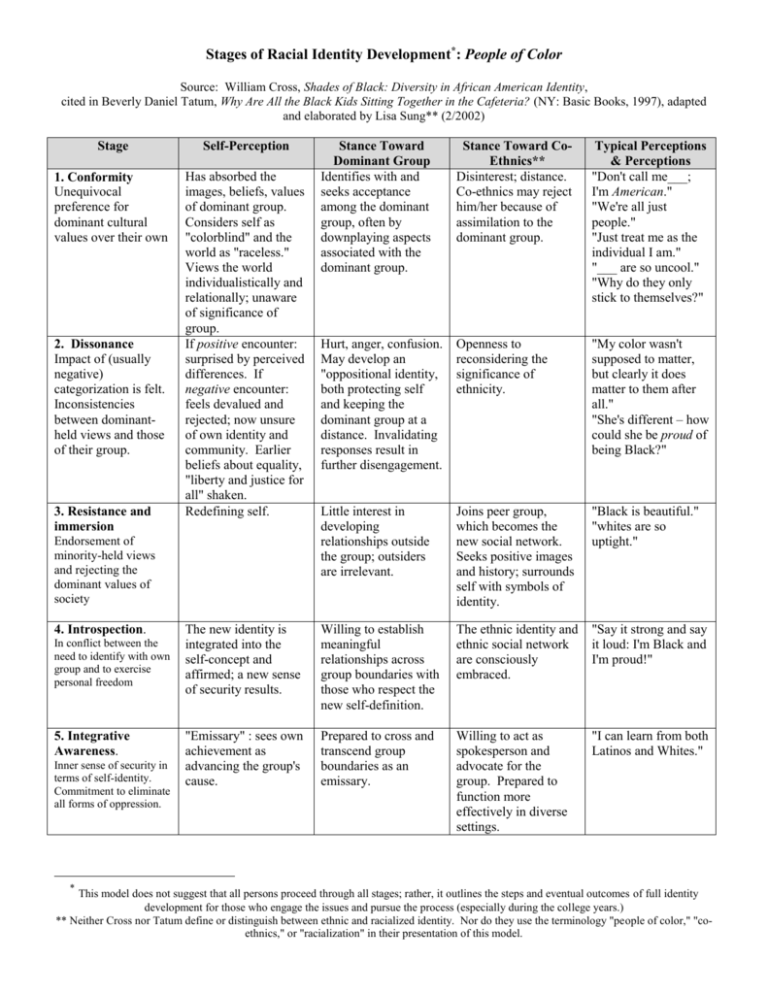
Stages of Racial Identity Development*: People of Color Source: William Cross, Shades of Black: Diversity in African American Identity, cited in Beverly Daniel Tatum, Why Are All the Black Kids Sitting Together in the Cafeteria? (NY: Basic Books, 1997), adapted and elaborated by Lisa Sung** (2/2002) Stage Self-Perception 1. Conformity Unequivocal preference for dominant cultural values over their own Has absorbed the images, beliefs, values of dominant group. Considers self as "colorblind" and the world as "raceless." Views the world individualistically and relationally; unaware of significance of group. If positive encounter: surprised by perceived differences. If negative encounter: feels devalued and rejected; now unsure of own identity and community. Earlier beliefs about equality, "liberty and justice for all" shaken. Redefining self. 2. Dissonance Impact of (usually negative) categorization is felt. Inconsistencies between dominantheld views and those of their group. 3. Resistance and immersion Stance Toward Dominant Group Identifies with and seeks acceptance among the dominant group, often by downplaying aspects associated with the dominant group. Stance Toward CoEthnics** Disinterest; distance. Co-ethnics may reject him/her because of assimilation to the dominant group. Typical Perceptions & Perceptions "Don't call me___; I'm American." "We're all just people." "Just treat me as the individual I am." "___ are so uncool." "Why do they only stick to themselves?" Hurt, anger, confusion. May develop an "oppositional identity, both protecting self and keeping the dominant group at a distance. Invalidating responses result in further disengagement. Openness to reconsidering the significance of ethnicity. "My color wasn't supposed to matter, but clearly it does matter to them after all." "She's different – how could she be proud of being Black?" Little interest in developing relationships outside the group; outsiders are irrelevant. Joins peer group, which becomes the new social network. Seeks positive images and history; surrounds self with symbols of identity. "Black is beautiful." "whites are so uptight." The new identity is integrated into the self-concept and affirmed; a new sense of security results. Willing to establish meaningful relationships across group boundaries with those who respect the new self-definition. The ethnic identity and ethnic social network are consciously embraced. "Say it strong and say it loud: I'm Black and I'm proud!" "Emissary" : sees own achievement as advancing the group's cause. Prepared to cross and transcend group boundaries as an emissary. Willing to act as spokesperson and advocate for the group. Prepared to function more effectively in diverse settings. "I can learn from both Latinos and Whites." Endorsement of minority-held views and rejecting the dominant values of society 4. Introspection. In conflict between the need to identify with own group and to exercise personal freedom 5. Integrative Awareness. Inner sense of security in terms of self-identity. Commitment to eliminate all forms of oppression. * This model does not suggest that all persons proceed through all stages; rather, it outlines the steps and eventual outcomes of full identity development for those who engage the issues and pursue the process (especially during the college years.) ** Neither Cross nor Tatum define or distinguish between ethnic and racialized identity. Nor do they use the terminology "people of color," "coethnics," or "racialization" in their presentation of this model. Stages of Racial Identity Development*: White Identity Source: Janet Helms (1990) Stage Self-Perception 1. Pre-Contact Whites pay little attention to the significance of their racial identity. “I am normal.” “I’m color blind.” "Normal": no particular culture or ethnicity. Sees self as a person of goodwill, unprejudiced, colorblind. Views persons and the world individualistically and relationally; unaware of significance of group. "Normal." Sees own community as possessing goodwill, unprejudiced, colorblind. Racism is deliberate and over: acts of hostility or discrimination, or hate crimes committed by certain individuals. Disinterest or naïve curiosity about ethnic or cultural differences. "I don’t see color. I treat all the kids the same." "I don't see why they keep focusing on our differences; underneath, we're all the same." "Why do those Hispanic always stick to each other?" "I don't think of you as ___; you're just you." "Some of my best friends are ___." 2. Disintegration. Growing awareness of racism and white privilege as a result of personal encounters. This new awareness is characterized by discomfort. “How can I be white?” 3. Reintegration. Idealization of Whites and White culture and denigration of people of color and their cultures. “We have the best because we are the best.” Earlier beliefs about equality, "liberty and justice for all" shaken. Feelings of guilt and shame about historical oppression and about one's own status in light of White privilege. Anger. Tempted to distance self from confronting the issues and one's upbringing and community. May retreat into silence, or may become overzealous. Sees impact of racism in life of associate or friend. May react by trying to dissociate completely from own group and to become "adopted" by people of color. "I'm not like most Whites; I'm a very fair, compassionate person." "I can't stand his racist jokes any longer." "I am a religious and moral person, but how do I accept this injustice?" Denial of responsibility for the problems of people of color. Blaming the victim and reasserting the cultural myths of rugged individualism and of pure meritocracy. Sides with and justifies the actions of own group and the pursuit of group interest. Hostility and anger directed toward people of color. Negative stereotypes and fear of people of color. "I'm not responsible for society or the hate of a few." "Everybody can succeed if they just work hard, so they have only themselves to blame." "I don’t know why these parents keep playing the race card." 4. Pseudo-independent. The individual gains an intellectual understanding of racism as a system of advantage, but unsure of what to do about it. “Let’s help them become more like Whites.” 5. Immersion. Marked by a recognized need to find more positive self-definition. Whites need to seek new ways of thinking about Whiteness, ways that take them beyond the role of victimizer. “I’m white!.” May develop "aversive" racism": wants the ideals of equality and racial tolerance, yet unwilling to confront own racialized biases and racialized privilege. Tends to overlook and rationalize racializing biases and actions perpetuating White privilege, by 1) denying that prejudice exists, or 2) citing other reasons. "Achievement gap has nothing to do with race; it’s all about poverty." "Let’s teach Hispanic parents how to be better parents at home." "He didn’t mean to be racist. He’s a nicest guy I’ve ever known.” “What does research say?” Wants to develop a positive self-concept as a White in light of the historical and contemporary reality of White privilege. Assumes personal responsibility for racism and understand one’s role in perpetuating it. Wants to develop a positive self-concept as a White in light of the historical and contemporary reality of White privilege. May try escaping Whiteness by exclusively associating with people of color; maybe rebuffed by those in the Dissonance or Resistance/immersion stages. Localizes race and race issues in people of color. If successful in forming relationships with people of color, may benefit from their outside perspective and comparison. 6. Integration. Positive views of European American ethnic identity and of whiteness are internalized. Makes a commitment to oppose racism. Committed to act and advocate for justice for people of color by seeking to dismantle White privilege and by working for full inclusion. Committed to act to advocate for justice and to work to empower people of color for full participation and contribution. "What can I do to help see all people the impact of race in student learning?" “How can I work with my allies to reduce racial disparities in student discipline?” A person incorporates the newly defined view of whiteness as part of a personal identity. The process is marked by an increased effectiveness in multiracial settings. Continued engagement in learning about antiracism. “I see color and I like it.” Stance Toward Own (Dominant) Group Stance Toward People of Color Typical Perceptions & Perceptions "I don't know anything about my ethnicity or culture; I feel a little cheated. Whey didn't my family keep alive?" "If I really start speaking up about racism, I might start losing friends over it. Do I really want to get into with it them?"

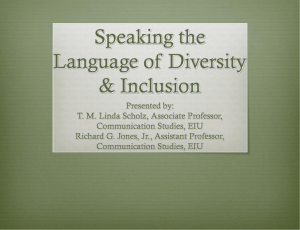

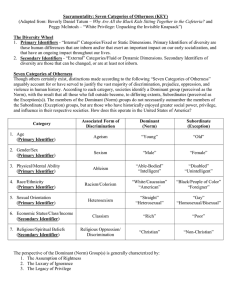
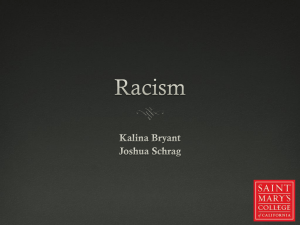
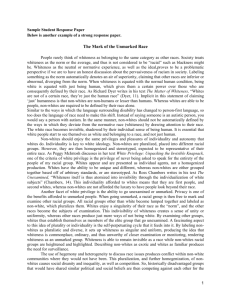
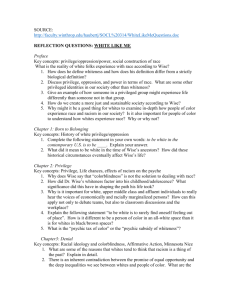
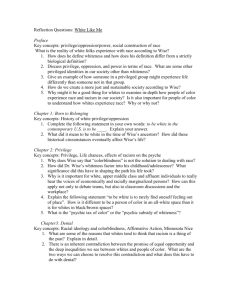

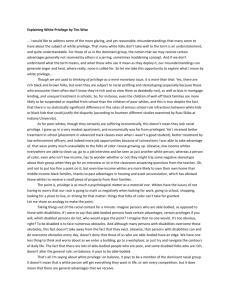

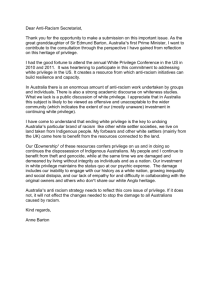
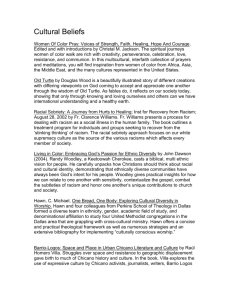
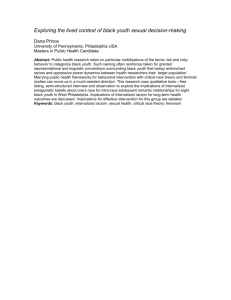
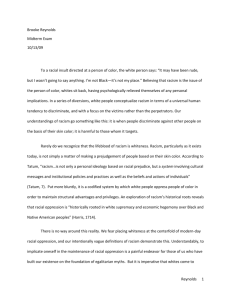
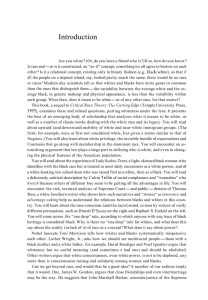
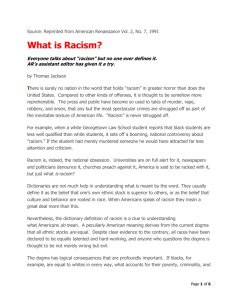
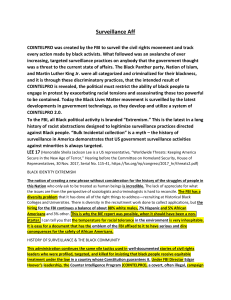
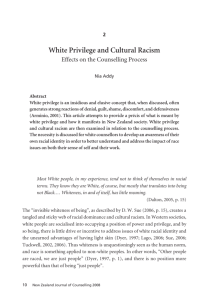
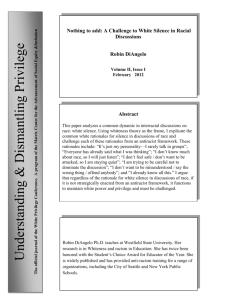

![`White Trash` [doc] - El Kilombo Intergaláctico](http://s3.studylib.net/store/data/008027304_1-fee9e0bde26cbc1436130aa10ac86816-300x300.png)